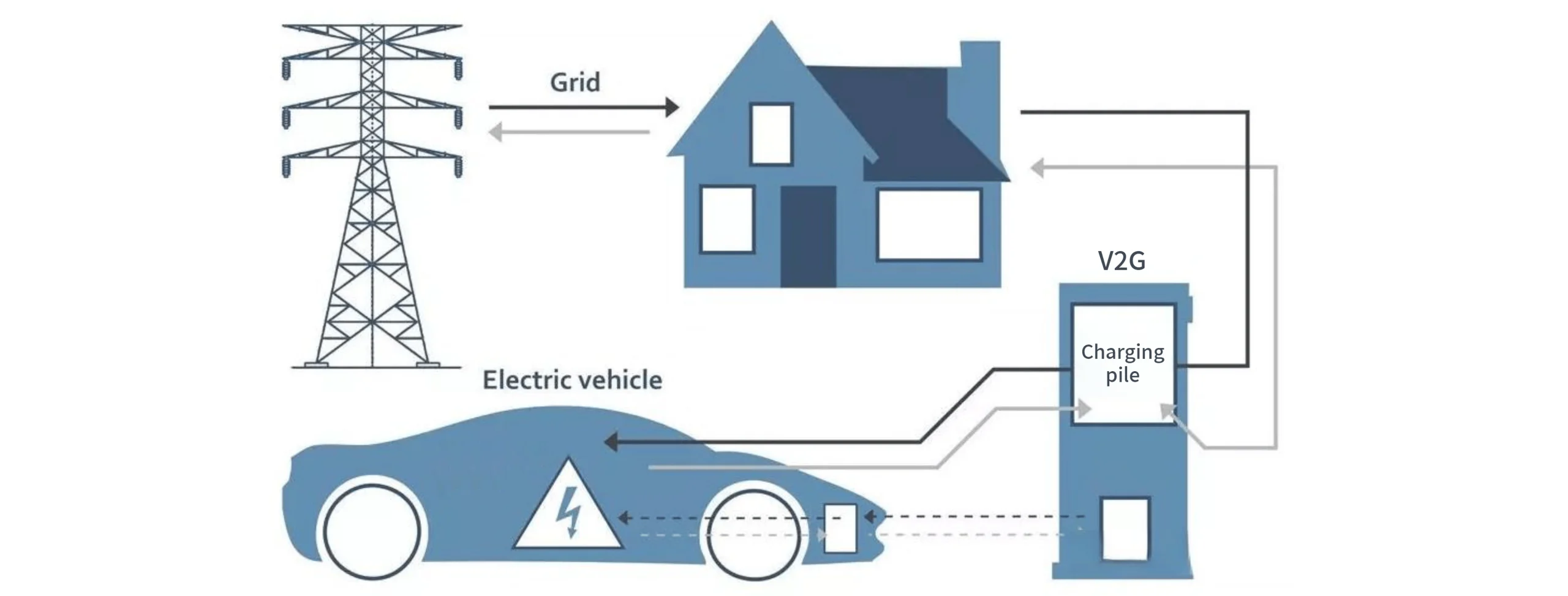State Grid eCharging Platform and V2G Charging Stations
As electric vehicles (EVs) rapidly gain popularity, the State Grid eCharging platform has made significant progress in advancing Vehicle-to-Grid (V2G) technology. V2G enables bidirectional energy flow, allowing EVs not only to charge from the grid but also to feed stored energy back into it. This “vehicle-grid interaction” offers new value in renewable energy utilization, grid stability, and economic benefits for users.

▶ 1. Core Functions and Application Scenarios of V2G Technology
Core Functions
At the heart of V2G technology lies bidirectional inverter charging, which connects EVs to the grid through V2G charging stations, enabling a two-way exchange of energy and information. Key functions include:
- Smart Controlled Charging: Charging vehicles during off-peak hours to flatten load fluctuations.
- Reverse Discharging: Feeding stored energy back into the grid during peak demand to alleviate supply pressure.
Application Scenarios
Load Balancing: By intelligently managing charging and discharging, V2G smoothens grid load curves. For instance, at a charging station in Hangzhou’s Xiaoshan District, an EV owner used a V2G charger to transfer 60 kWh of energy back to the grid during peak hours and earned rewards equivalent to RMB 200.
Renewable Energy Integration: V2G supports charging during high-output periods of solar or wind power, enhancing clean energy utilization.
Emergency Backup Power: EVs can serve as mobile storage units, providing critical power during outages at tourist sites or community parking areas.
Commercial Building Support (V2B): In Ningbo’s Jiangbei District, a V2B demonstration station enables EVs to supply power to office buildings, participating in peak shaving and demand response services.
▶ 2. Deployment and Achievements of State Grid eCharging Platform
Scaling Up V2G Applications
As of 2024, the State Grid eCharging platform has integrated 420 V2G demonstration stations nationwide. Its extensive “10 verticals, 10 horizontals, and two loops” highway fast-charging network ensures convenient long-distance travel while promoting the commercialization of vehicle-grid interaction.
Commercialized Operations
The Beijing Zhongzai Center became China’s first commercialized V2G demonstration station in 2020. This project provides a replicable business model for others in the industry. Through V2G participation, EV owners can charge at lower rates during off-peak hours and sell surplus energy back to the grid during peak times, earning annual profits of up to RMB 1,300—potentially offsetting vehicle operating costs entirely.
▶ 3. Advantages and Challenges of V2G Technology
Advantages
Economic Benefits: EV owners reduce energy costs through peak-valley price differences while helping utilities save on peak-load generation investments.
Flexibility and Cost Efficiency: Compared to fixed storage systems, EVs are more flexible and cost-effective as mobile storage units.
Support for Renewable Energy: Enhances the absorption of solar and wind energy, contributing to green development goals.
Challenges
Incomplete Standards: The lack of unified standards for V2G integration—covering areas like metering, communication protocols, and grid interconnection—hinders large-scale adoption.
Limited Business Models: Current revenue streams rely heavily on price arbitrage; diversified commercialization pathways such as ancillary services or aggregated trading are still under exploration.
▶ 4. Future Development Directions
To further advance V2G technology, State Grid is researching “EV Aggregation Control and Active Support Key Technologies.” This involves a smart management platform that aggregates dispersed EVs for unified monitoring and control, optimizing energy usage efficiency. Additionally, establishing robust market mechanisms—such as discharge pricing rules and data security standards—will be crucial for scaling up V2G applications.
▶ Conclusion
By promoting V2G technology, the State Grid eCharging platform not only enhances user experiences but also contributes significantly to building a new energy system aligned with carbon neutrality goals. As technology matures and market mechanisms improve, “vehicle-grid interaction” will become a key driver for the EV industry’s growth while playing an increasingly vital role in global energy transitions.
